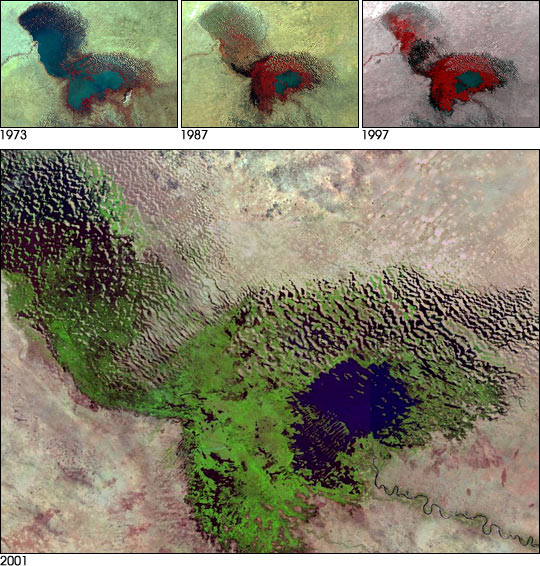


Lake Chad, once one of the African continent's largest bodies of fresh water, has dramatically decreased in size due to climate change and human demand for water. Once a great lake close in surface area to North America's Lake Erie, Lake Chad is now a ghost of its former self. According to a study by University of Wisconsin-Madison researchers, working with NASA's Earth Observing System program, the lake is now 1/20th of the size it was 35 years ago.
Found at the intersection of four different countries in West Africa (Chad, Niger, Nigeria, and Cameroon), Lake Chad has been the source of water for massive irrigation projects. In addition, the region has suffered from an increasingly dry climate, experiencing a significant decline in rainfall since the early 1960s.
The most dramatic decrease in the size of the lake is shown in the fifteen years between January 1973 and January 1987. Beginning in 1983 the amount of water used for irrigation began to increase. Ultimately, between 1983 and 1994, the amount of water diverted for purposes of irrigation quadrupled from the amount used in the previous 25 years. The red color denotes vegetation on the lake bed and the ripples on the western edge of the lake denote sand dunes formed by the wind.
The bottom picture is a composite of Landsat-7 images from November 2000 to February 2001 showing the present stage of Lake Chad. The small patch of blue that is now the lake stands in stark contrast to the wide swath of the old lake bed (shown in green, indicating vegetation).
For more information, see: Africa'S Lake Chad Shrinks by 20 Times Due to Irrigation Demands, Climate Change
Images courtesy NASA GSFC Scientific Visualization Studio and Landsat 7 Project Science Office.